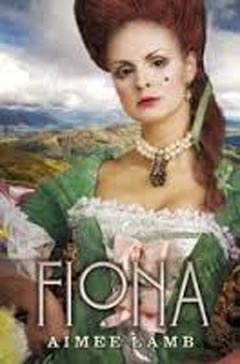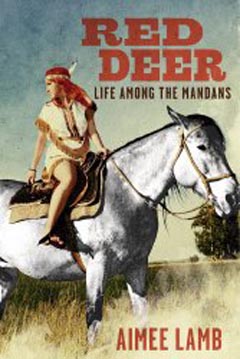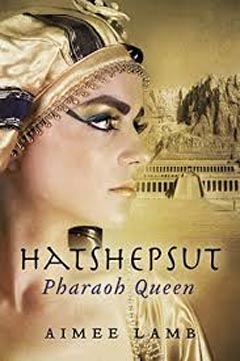
Historical Fiction
Writing as Aimee Lamb
Writing under the nom de plume Aimee Lamb, Jacquie Richardson writes historical novels and has many screenplays in production. Several of her original screenplays and short scripts have placed well in international competitions, including the Anything But Hollywood and the Tucan Films awards. Her award-winning screenplay Boadicea is based on the story of the legendary heroine of the Roman invasion of the British Isles, and won the Screenplay-Historical Drama category at the 2001 International New Author Awards Competition, sponsored by Authorlink in conjunction with the Harriette Austin Writers Conference at the University of Georgia College of Education. Jacquie also collaborates with leading screenwriters on a wide range of critically acclaimed stories.

Writing as Aimee Lamb, Richardson's first published novel is Fiona, a historical romance set in the Scottish Highlands, London, and colonial India. As historical fiction, this novel has a sound basis in historical fact around which a sweeping Celtic coming of age story emerges set in the 18th century. These are desperate times in the Scottish highlands as Fiona embarks on an adventure that takes her to London to help rescue a fugitive Scottish patriot in a pursuit of "justice, adventure, and true love."
Fiona was originally written while Jacqueline was still at school. Jacqueline Richardson credits her teachers Mr. Leach for her love of history, Mme Briquet for a love of poetry and the English language, and Mr. Quinn for persevering with Latin in spite of his students! The dedication to the book is in Latin. The story takes us from Bengal in India, and a struggle to survive the infamous Black Hole of Calcutta affair, to her own country Scotland, occupied by English forces under a ruthless commander. The North American continent also features in this saga, as Fiona's uncle fights under the leadership of Major General Braddock, while Fiona pursues her quest for justice, and her first love.

Red Deer: Life Among the Mandans tells the story of a young French girl who narrowly escapes when her family is ambushed while crossing the plains. Frightened and exhausted, she comes upon scouts from a Mandan hunting party and is given refuge in their nearby village. The tribe names her Red Deer for her auburn hair and from burns suffered during her escape. Anne learns the language and Mandan ways, and life is difficult, but good, until a wave of smallpox kills most of the tribes. Keeping the few survivors, Anne falls in love with a Pawnee warrior, before facing a serious dilemma after reuniting with her brother Pierre.
The Mandan tribe of native Americans lived along two tributaries of the Missouri River in the Dakotas region. They spoke a Siouan language, living in permanent villages constructed of large circular earthen lodges that surrounded a large common area. The Mandan enjoyed a settled, agrarian culture, hunting Bison and farming while trading regularly with other tribes on the Great Plains. The tribe first encountered Europeans when French traders reached the Heart and Knife Rivers during the 18th century.
The renowned American painter Catlin portrayed scenes of Mandan life and drew portraits of their chiefs while living among the tribe in the 19th century. His paintings impressed the chief known as Four Bears, who invited Catlin as the first European to watch the Okipa ceremony. Other notable visitors included Prince Maximilian of Wied-Neuwied and Swiss artist Karl Bodmer.

Hatshepsut Pharaoh Queen is the fictional account of the life of this exceptional ruler, whose reign lasted for 22 years. The story opens as the young princess is being groomed for the throne and is set to be married to her half brother. The scene at the palace in Thebes is true to the period, while the characters and customs are portrayed as they most likely existed.
The 18th Dynasty in ancient Egypt was a period of revitalization after the Hyksos occupation, as the full extent of Egyptian territory was brought back under the kingdom. Hatshepsut was the fifth Pharaoh to rule during this dynasty, assuming the throne from her father Thutmose I, and acting as regent for her half-brother and husband Thutmose II. Hatshepsut's rule was marked by peace and stability, during which time trade routes were expanded to Punt on the southern Arabian peninsula, bringing considerable wealth and prosperity across Egypt.
Legend has it that it was Hatshepsut who rescued Moses, who as a baby was discovered in a basket hidden in the reeds along the shore of the Nile river, and the novel portrays the young Hatshepsut bringing up Moses from his infancy. They become close companions, even as her father Thutmose I forbids their marriage. Hatshepsut left a lasting legacy, being one of the most prolific builders in ancient Egypt as well as the becoming first Pharaoh to construct in the Valley of the Kings, which she originally wanted to be called the Valley of the Queens. Hatshepsut constructed the Hatshepsut's mortuary temple complex at Deir el-Bahri which is notable for its panoramic symmetry.




